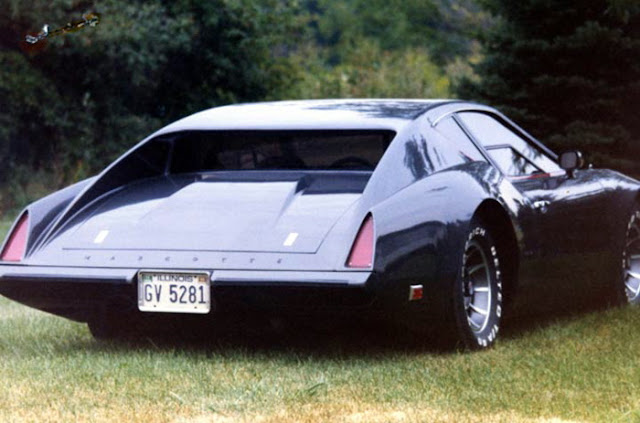While the general history of Automobili Lamborghini S.p.A. is well known among enthusiasts, your author will briefly recount it here to serve as background for the subject of this article.
Italian manufacturing magnate, Ferruccio Lamborghini, founded the company that shares his name in 1963. The story of Ferruccio's experience as a customer of Ferrari and Enzo's condescending attitude towards him, which prompted him to found his own car company, is legendary. The company's first models were introduced in the mid-1960s and were noted for their refinement, power and comfort.
Lamborghini grew rapidly during its first decade, but sales plunged in the wake of the 1973 worldwide financial downturn and the oil crisis. Ferruccio Lamborghini sold ownership of the company to Georges-Henri Rossetti and René Leimer and retired in 1974. The company went bankrupt in 1978, and was placed in the receivership of brothers Jean-Claude and Patrick Mimran in 1980, who purchased the company for US$3 million, renaming it Nuova Automobili Lamborghini SpA.
 |
| The Lamborghini L150 in profile |
In the ensuing years, Lamborghini would change hands a number of times. Mimran sold the concern to Chrysler, who then sold it to a Malaysian investment conglomerate, and the company ultimately ended up under the umbrella of its current owners, the Volkswagen Group. However, the backdrop for the story of the stillborn Countach successor is the period of Mimran ownership.
Under Mimran's management, the automaker reworked the failed Silhouette into the Jalpa, which was powered by a 3.5-litre V8 that had been modified by former Maserati engineering great, Giulio Alfieri. More successful than the Silhouette, the Jalpa came closer to achieving the goal of a more affordable, livable version of the Countach.
The Countach was also updated, finally allowing it to be sold in the U.S. with the introduction of the LP 500S model in 1982. The Countach LP 5000 Quattrovalvole, whose engine generated a power output of 455 PS (335 kW; 449 hp), was introduced in 1984. Further development of the failed Cheetah project resulted in the introduction of the LM002 sport utility vehicle in 1986.
 |
| The Lamborghini L150, at rear |
It was during this timeframe that acclaimed former Maserati engineer, Giulio Alfieri, was hired on. It was his desire to create a successor to the venerable Countach, which was beginning to show its age. It would be more modern, more powerful, and more usable than the original was, with all of its quirks and compromises. The project was referred to as the "Restyling Prototype" and was given the internal project designation of L150.
The L150 would have a redesigned chassis, both for greater rigidity and to accommodate a new cooling system that addressed the considerable thermal management needs of its upgraded motor. This new chassis also benefitted from improvements to the suspension and fitment of even larger wheels and tires than the LP5000 QV or Anniversary Edition Countach models.
The exterior design of the L150 was done by Horatio Pagani, who would also pen the Anniversary Edition and Countach Evoluzione, before founding his own supercar company. The styling of the L150 was more a further development of the original Countach than a complete redesign, like the later Diablo was. However, the L150 did have some significant differences from the car it was intended to replace.
 |
| The Lamborghini L150, from above |
Among these changes were the replacement of the NACA ducts with larger air vents on the body sides (which could open and close depending on the temperature), new inlets behind the side-glass and vents on the rear fenders, as well as removal of the manually operated two-piece side windows in the doors in favor of electric ones that rolled down in a more conventional manner. The car also had a revised air dam at the front and large openings at the back of the rear fenders for cooling purposes.
Overall, Pagani's design would retain much of the original theme of the Countach. Many of its styling elements even referenced Gandini's original concept car directly. The L150 design also offered better aerodynamics, with its cleaner shape and better airflow management.
While the L150 was hinted at in contemporary automotive magazines at the time, it seemed to fall down the memory hole with the sale of Lamborghini to Chrysler. In the US magazines some speculative renderings and pictures of a mock-up are all that remained. It was not until recently that your author learned of the existence of the completed and fully functional prototype. It all but disappeared into history...
 |
| The Lamborghini L150, front quarter view |
During the course of the Chrysler sale, Patrick Mimran took possession of the L150 prototype as a parting gift to himself, so the story goes. He was well aware of Chrysler's intent to scrap the project in favor of an all new car to replace the venerable Countach. He would step down as CEO in 1987. In 1989 the car was sold to Auto Palace, a supercar dealership in Japan, for an alleged ¥400 million ($2.6 million in 1989, $5.3 million in 2020). It was then bought by one of Japan’s biggest car collectors, Minoru Miura. The L150 remains in his collection today.
With the 2021 introduction of a "new" Countach, commemorating the 50th Anniversary of the original's 1971 introduction, it seems fitting to remember the L150. It represents a vision of a "new Countach" that never was.
Sources:
Wikipedia
Classic Driver Magazine
 |
| The Lamborghini L150, with test driver Valentino Balboni |
 |
| The Lamborghini L150, at rear |
 |
| The Lamborghini L150's side intakes |
 |
| The Lamborghini L150 engine bay |
 |
| The Lamborghini L150 interior |
 |
| The Lamborghini L150, interior from above |
 |
| The Lamborghini L150, rear quarter |
 |
| The Lamborghini L150, at front |

















Comments
Post a Comment